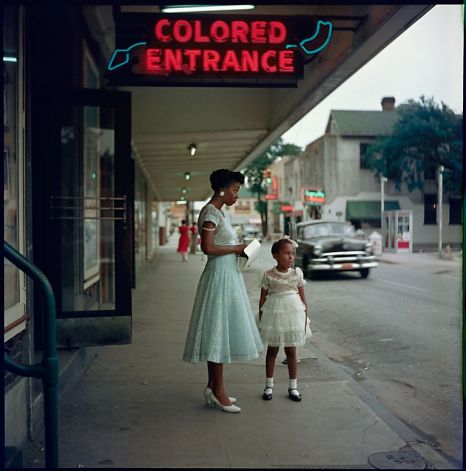
Patricia Yollin
When Karen Jenkins-Johnson decided to put together an exhibition of photographs by Gordon Parks, she had to choose from at least 900 images. It was an almost impossible task, but she eventually selected 92 pictures that capture gangs in Harlem, fashion in Paris, a starving boy in Brazil and more than four decades of work.
“I wanted to show the breadth and depth of his career,” she said.
Parks was a photographer, composer, filmmaker and writer who was born in 1912 and died in 2006 at age 93. Henry Louis Gates Jr., literary critic and Harvard University professor, described him as “the most important black photographer in the history of photojournalism.”
The youngest of 15 children of tenant farmers in Kansas, he was homeless at times as a teenager and finally escaped the streets by playing the piano in a bordello. When he was working as a porter and waiter on a train, he found a few discarded issues of Vogue. “Gordon said, ‘You watch. Some day I’m going to be a photographer in this magazine,’ ” said George Philip LeBourdais, who contributed to a five-volume Parks collection published this year.
In 1938 Parks bought a camera in a Seattle pawnshop. Four years later he was taking pictures for the Farm Security Administration in Washington when he met Ella Watson, a charwoman. He photographed her in front of the U.S. flag – with a mop in one hand and a broom in the other – and titled the image “American Gothic” because it was modeled on Grant Wood‘s famous painting.
“FSA Director Roy Stryker said, ‘This photograph is going to get us both fired,’ because it was depicting a black woman in a very negative light, looking so desperate,” noted Peter Kunhardt Jr., 30, director of the Gordon Parks Foundation.
“American Gothic” leads off the exhibition, which includes images of a sweating Muhammad Ali, the Tuskegee Airmen, segregation in the South, the Black Panthers, celebrities such as actress Ingrid Bergman and conductor Leonard Bernstein, and New Englanders who in 1944 had never met a black person.
Jenkins-Johnson, a 52-year-old African American, grew up in an integrated neighborhood in Portland, Ore. “I am a product of the lack of teaching about black history,” she said. “I only discovered Gordon Parks in 2004. I’ve been in love with his work ever since.”
Parks spent 24 years at Life Magazine and became close friends with Kunhardt’s grandfather, who was managing editor. “Gordon wasn’t an icon. He was a member of our extended family,” Kunhardt said. “He’d have his pipe and a cowboy hat and a big coat when he visited us. He’d listen to everybody, and he always had a camera in his hand.”
If you go
Gordon Parks Centennial: Through April 27. 10 a.m.-6 p.m. Tuesday-Friday, 10 a.m.-5 p.m. Saturday. Jenkins Johnson Gallery, 464 Sutter St., S.F. (415) 677-0770. www.jenkinsjohnsongallery.com.
Patricia Yollin is a freelance writer and editor. E-mail: 96hours@sfchronicle.com
